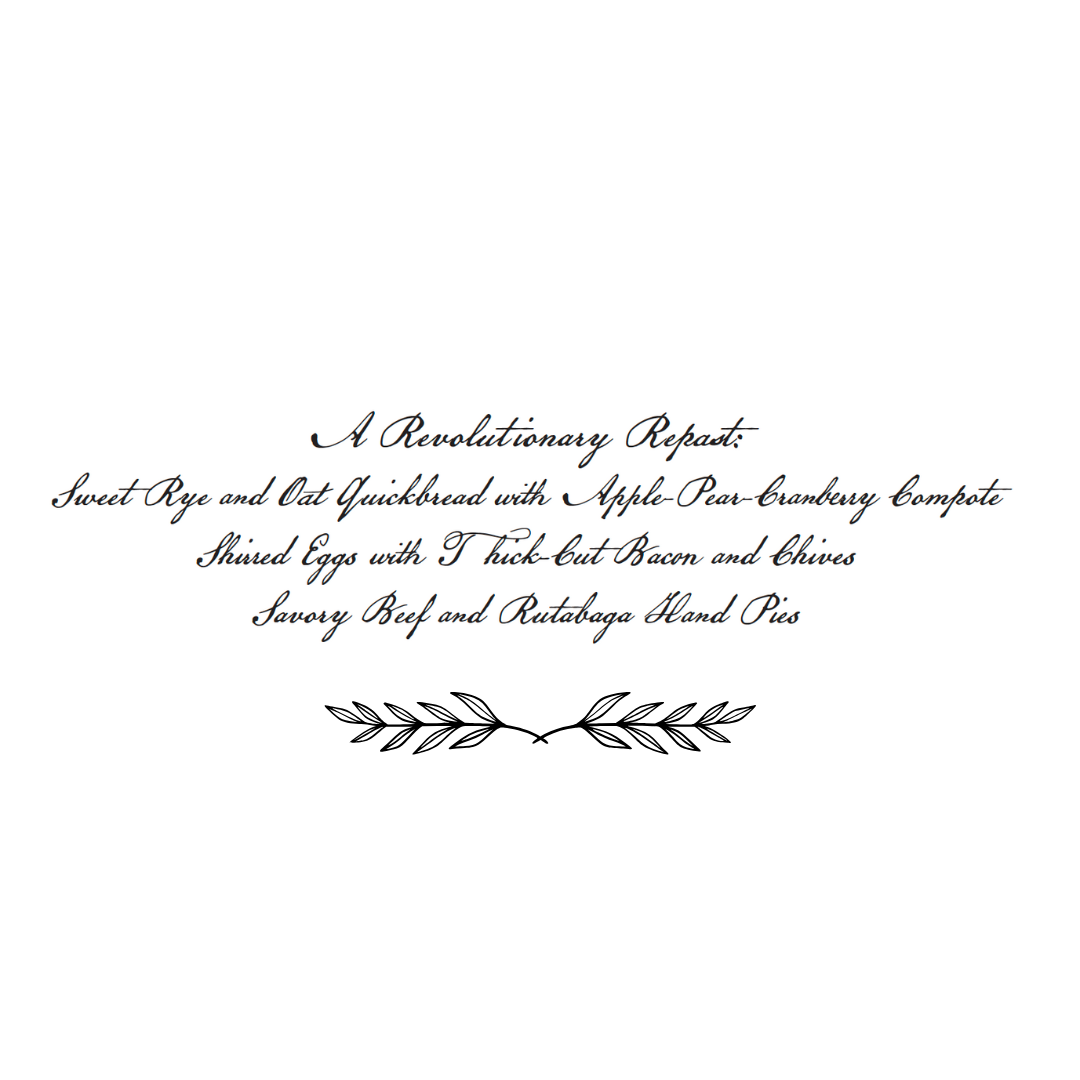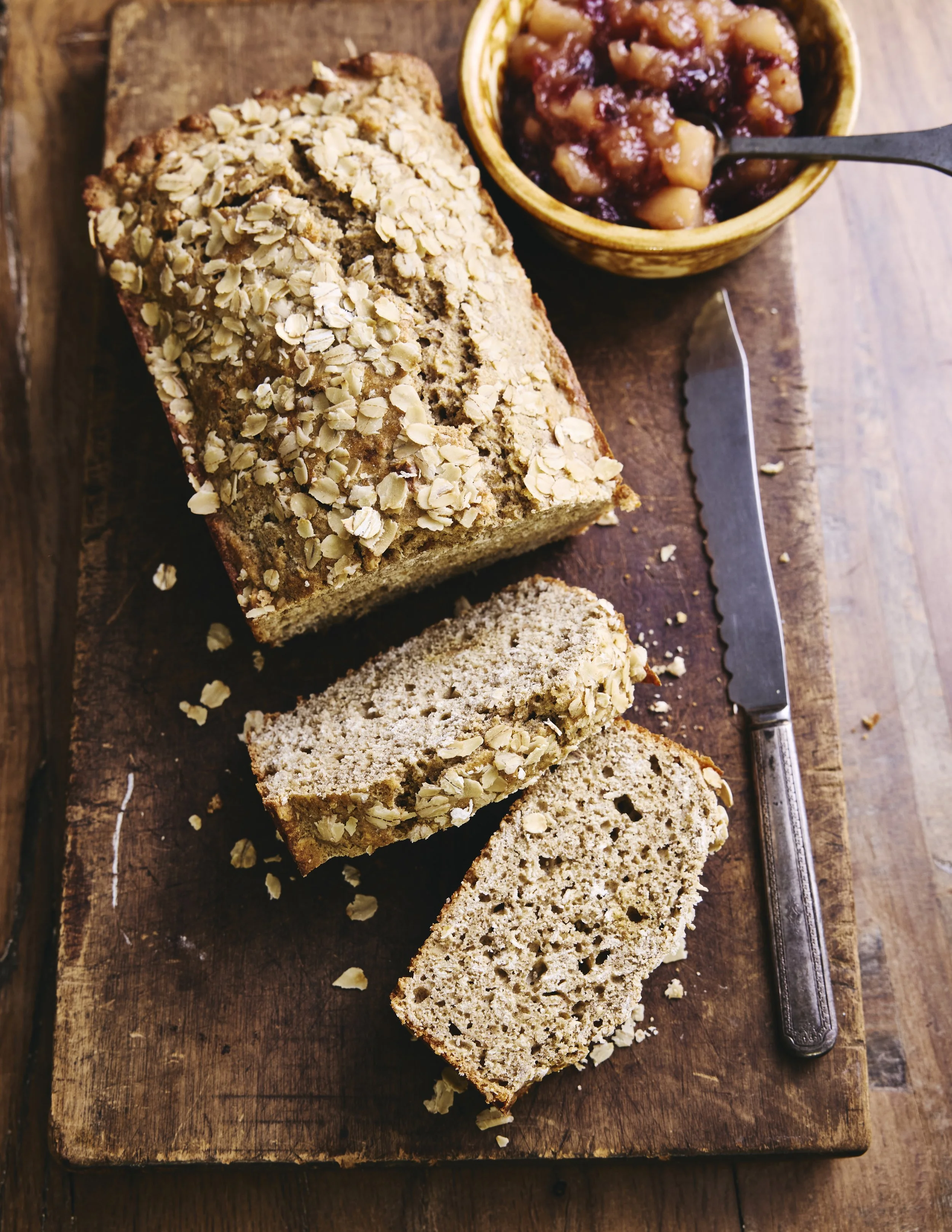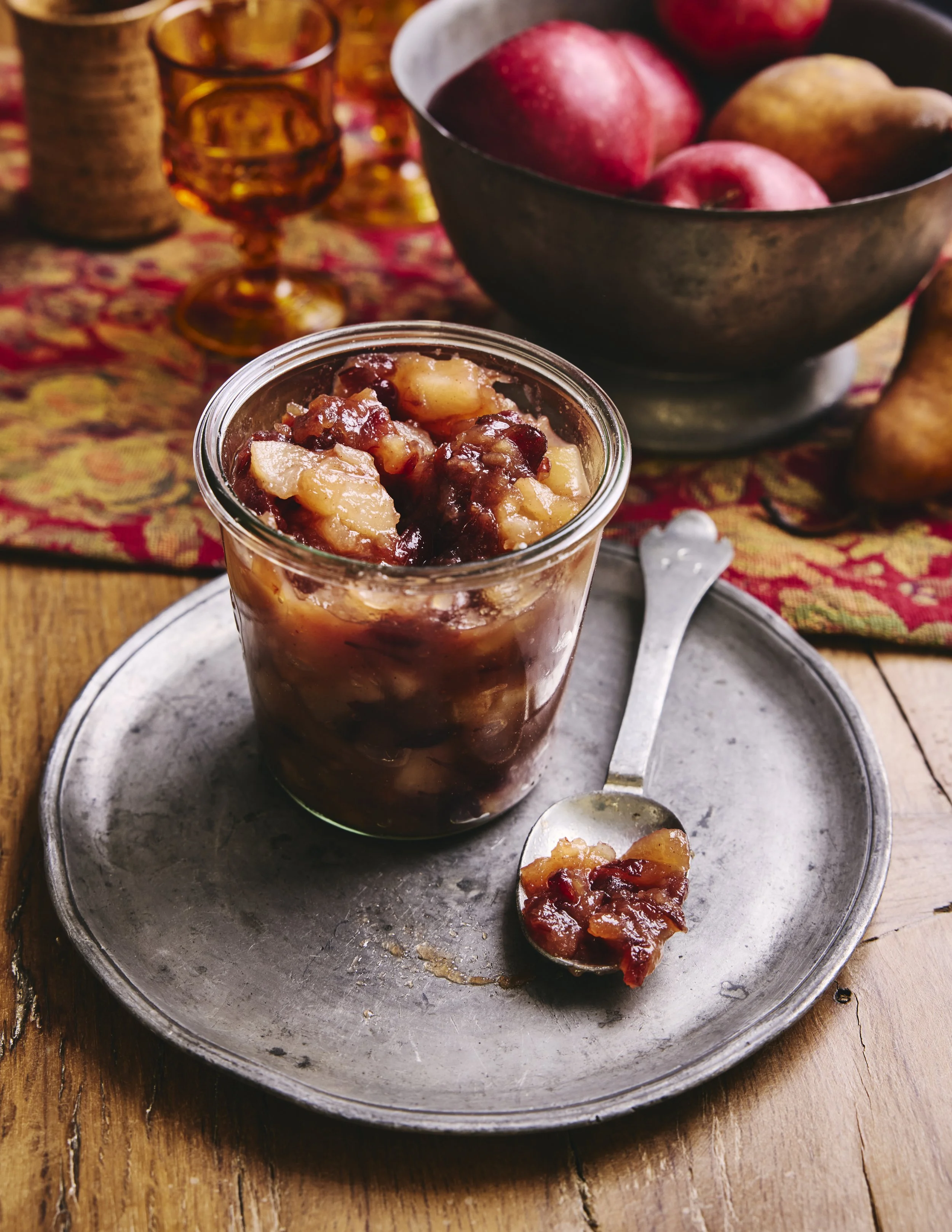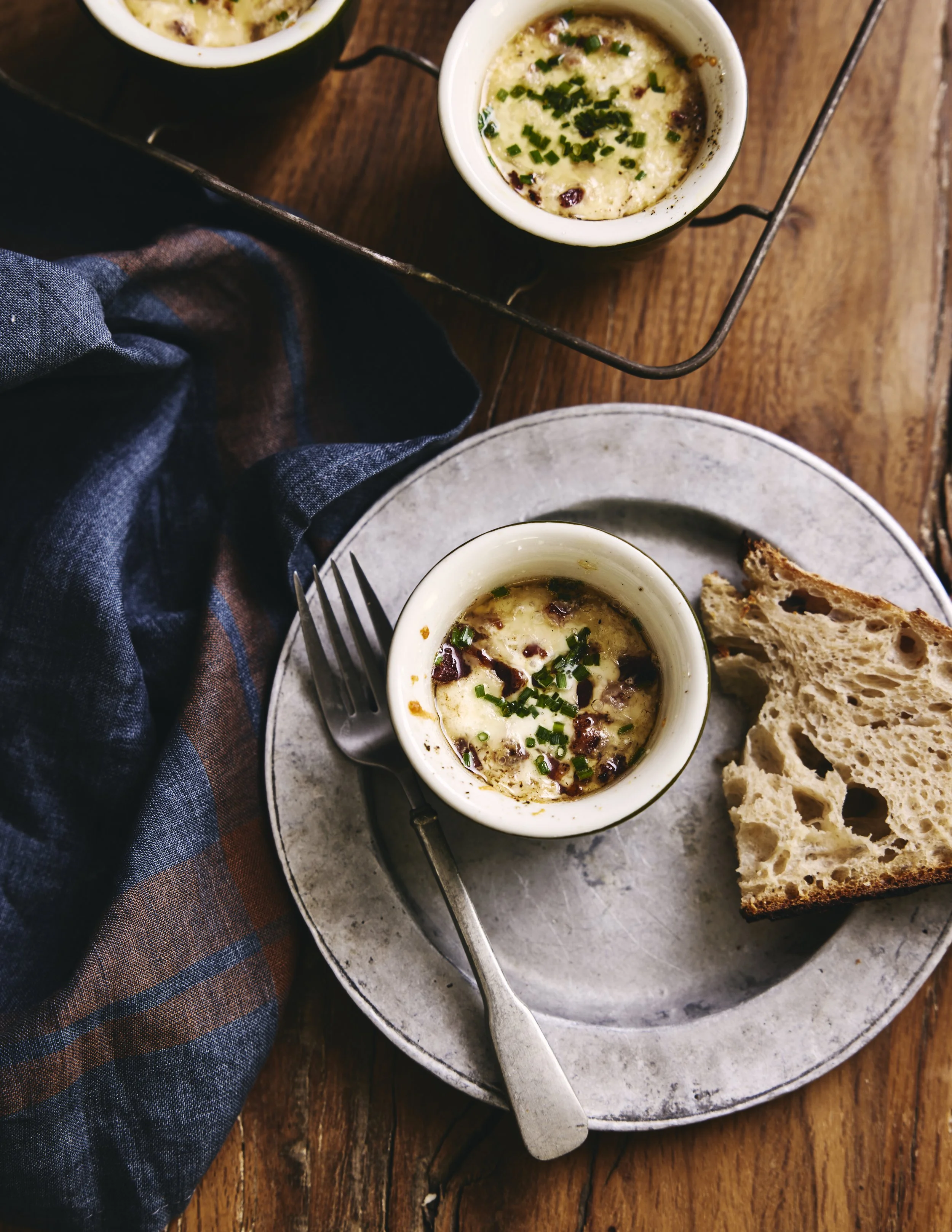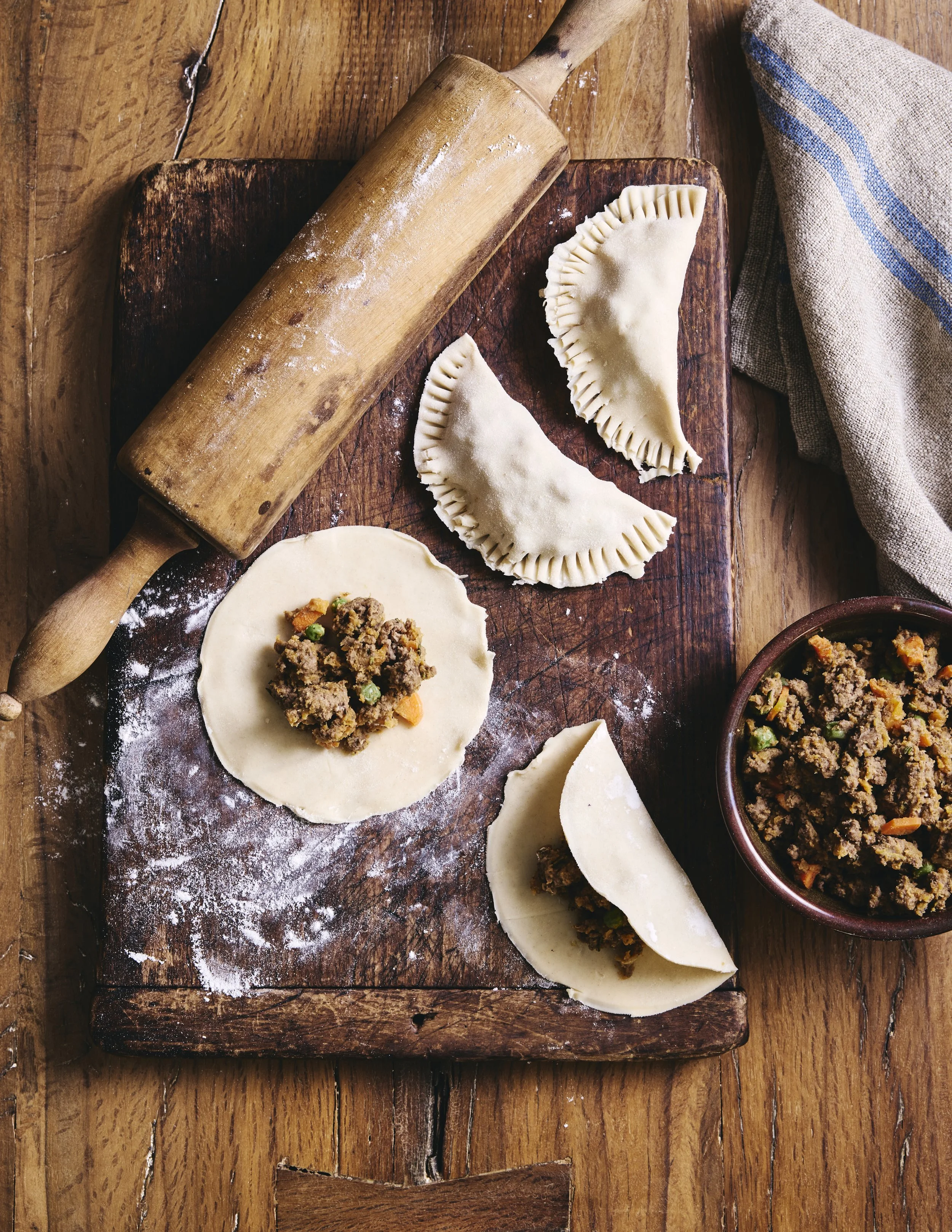Breakfast Before the Battle: A Forced Feast at Barrett’s Farm
Photos by Michael Piazza / Styled by Catrine Kelty
250 years later, we reconsider a meal on the eve of the Revolution, and the unsung heroine who prepared it.
On April 19th of this year, the towns of Lexington and Concord will pull out all the stops to commemorate the 250th anniversary of the start of the American Revolution, with countless conferences, exhibitions, parades and parties across both towns. Some of these celebrations will, of course, include food (including multiple pancake breakfasts). But when we set our own tables this Patriots Day, we should pay tribute to Rebecca Hubbard Barrett, wife of Colonel James Barrett and a home cook who played a major role in the events of that important day.
The Barretts’ Concord homestead on Mill Road (now called Barrett’s Mill Road) was built in 1705, and in 1760 Colonel Barrett added a new wing, including a large central chimney to heat the house. In 1775, Barrett’s property included 60–100 acres of prime farmland, with a kitchen herb garden; fields for rye, oats and barley; and space for raising chickens, pigs and dairy cows, along with an enslaved boy named Philip to manage them.
In many ways it was a “typical New England farm,” says Stacy Booth, a foodways historian and reenactor from Col. Bailey’s 2nd Massachusetts Regiment in Wakefield, growing “not only things for the household, but also things that would be sold commercially.” (The farmland remains fertile to this day: Barrett’s Mill Farm is now a thriving, certified organic CSA farm located across the street from the historic house.)
Yet it was James Barrett’s stature in Colonial Concord that made the house a cut above the rest. With ornate woodwork and painted rooms, the house’s interior showcased the family’s status as “an elevated household for Concord,” observes David Wood, curator of the Concord Museum. Barrett had served as a captain during the Seven Years’ War, and served as Concord’s delegate to the Provincial Congress in 1774. “It was Barrett’s duty to assemble the supplies” for the Revolution, says Wood, to prepare “an army of 15,000 to take the field.” Barrett was given the crucial task of concealing the militia’s arsenal in advance of the British troops’ arrival, and in the days before the battle he distributed the arsenal across 30 different homesteads, with four cannons hidden in his own fields.
Though the Revolution was at hand, many townships in New England still felt distinctly British, seen especially in people’s possessions. “Having a British-made teapot was still highly desirable during this era,” says Wood, “even when your neighbors might be against the import of British goods a few days later.” (Archaeological digs at the Barrett homestead have unearthed numerous fragments of creamware, or Queen’s ware.) The tendency towards British fashion was also echoed in the food of the era. The most popular cookbooks of the time—Eliza Smith’s The Compleat Housewife (published in 1727) and Hannah Glasse’s The Art of Cookery Made Plain and Easy (published in 1747)—affirmed British preferences for wheat and oat breads over corn, and for other English fare including puddings and meat pies. So as the British troops marched towards Concord, they did so expecting the town to be full of recognizably English food (if not exactly filled with loyalists).
When the British arrived at the Barrett farm in the wee hours of April 19, 1775, Rebecca answered the door and stood back as the Redcoat troops stormed into her house in search of musket balls, flints and cutlasses—which she’d stored in casks in the attic, covering them with feathers. Their search unsuccessful, the soldiers demanded breakfast before they departed. One narrative claims Rebecca brought “pans of milk” and “sweet loaves of brown bread,” saying, “We are commanded to feed our enemies.” Other accounts suggest that doughnuts appeared, along with “boiled meat,” “ham” and “pies,” along with seasonal fruit preserves and a combination of coffee, cider or small glasses of beer. “Someone in a rich household like Barrett’s might have [served] several courses,” observes Booth, akin to a “buffet-style spread.” Many accounts claim that the soldiers offered to pay for the meal, but Rebecca refused their coin, saying, “This is the price of blood.” But as the soldiers dined, little did they realize that Rebecca’s breakfast feast had bought valuable time for the gathering scrappy New England militia.
The valorization of Rebecca’s breakfast appeared in countless stories throughout the 19th century, including the 1898 “romance” by Margaret Sidney, A Little Maid of Concord Town. Perhaps the menu below is a bit fictionalized as well, extrapolating from the folklore, but also from authors Smith and Glasse as well as Amelia Simmons, whose American Cookery (1796) is considered the first true American cookbook. But to find more contributions of women to the Revolution, we must look beyond the archives, to the dishes that still grace our tables today. 250 years later, Rebecca’s breakfast makes for an edible metaphor of grace under fire, and as evidence that women like her used hospitality as a weapon to protect their families and support their communities. The survival to this day of the Barrett homestead—now part of Minuteman National Park—speaks not only to Colonel Barrett’s legacy, but to Rebecca Barrett’s culinary ingenuity.
EDITOR’S NOTE: If you’d like to learn more about Rebecca Barrett, Revolutionary Concord and to see—in person—the wooden front door the British knocked upon on April 19th, 1775, we highly recommend a visit to The Concord Museum.
This story appeared in the Spring 2025 issue.

